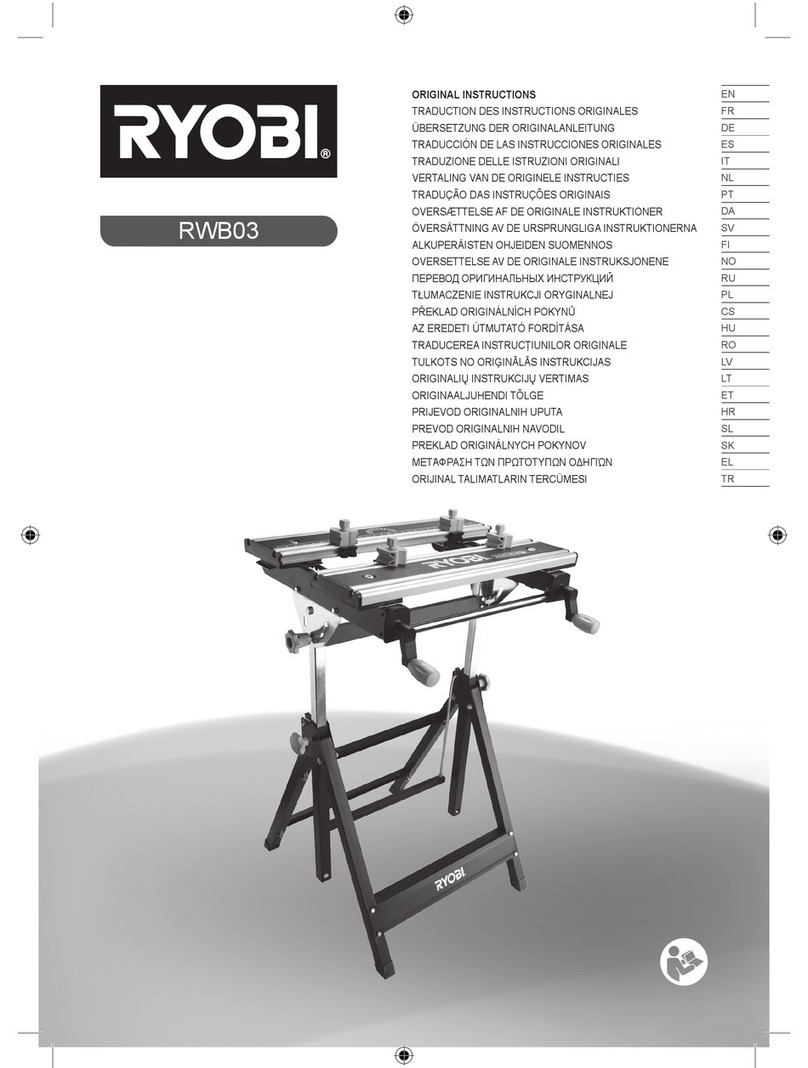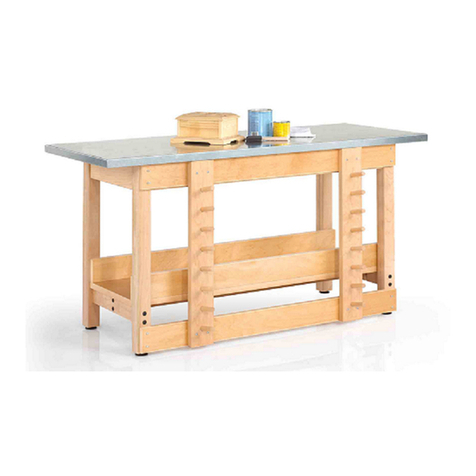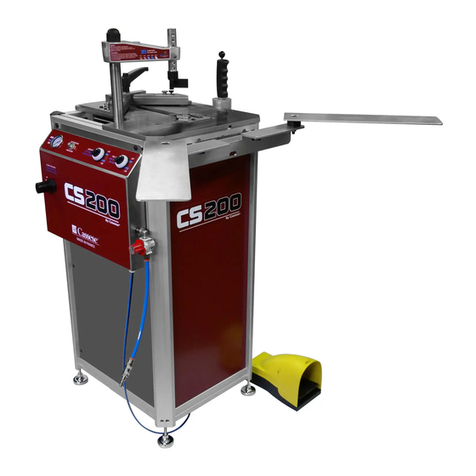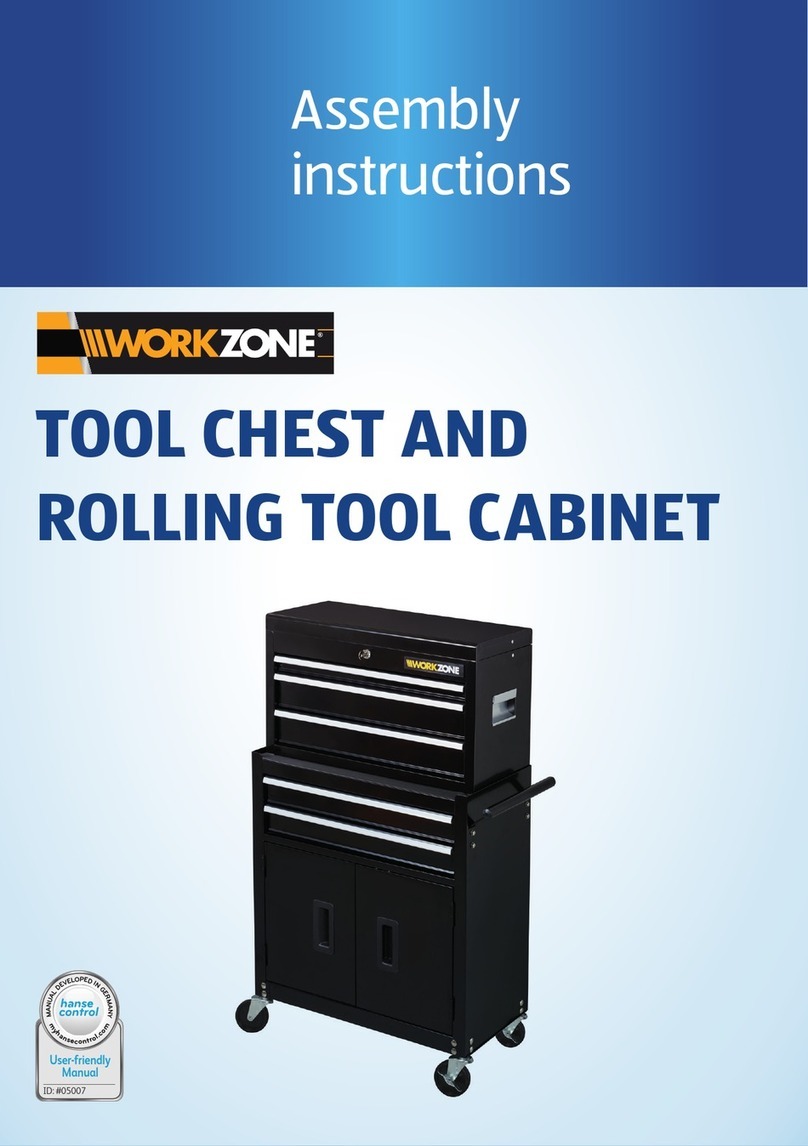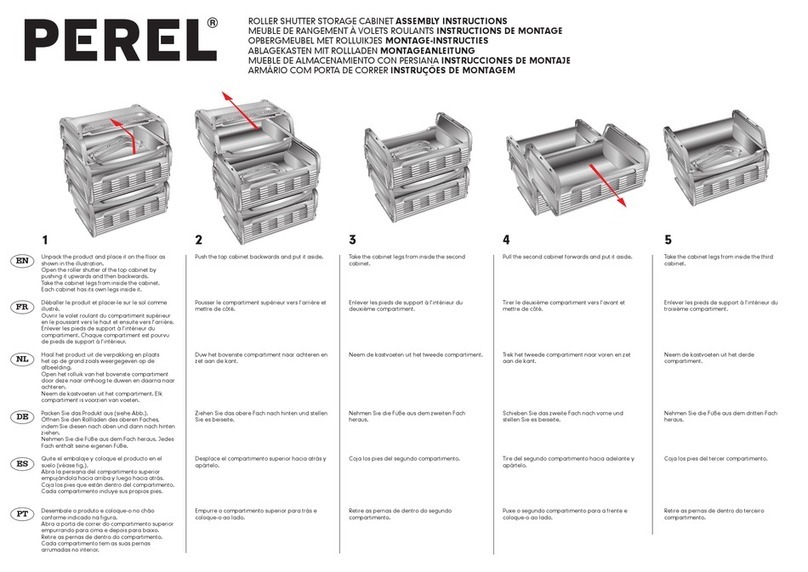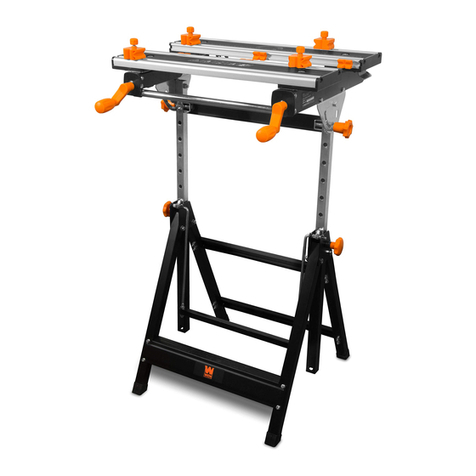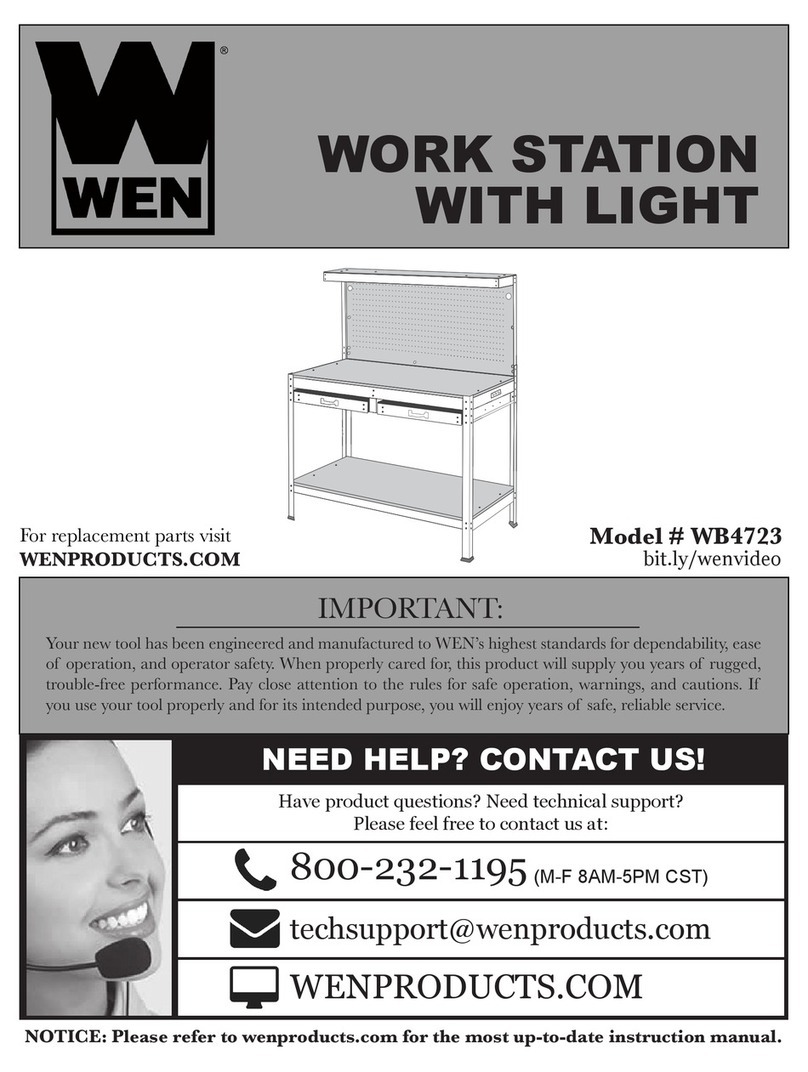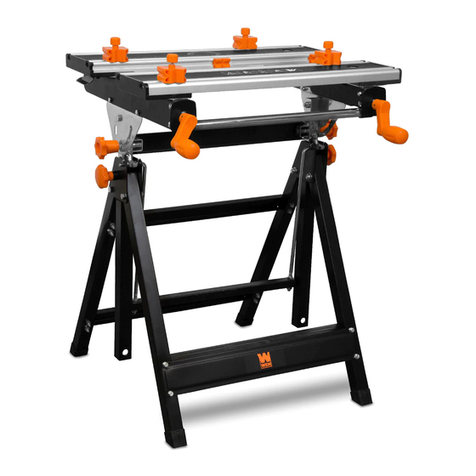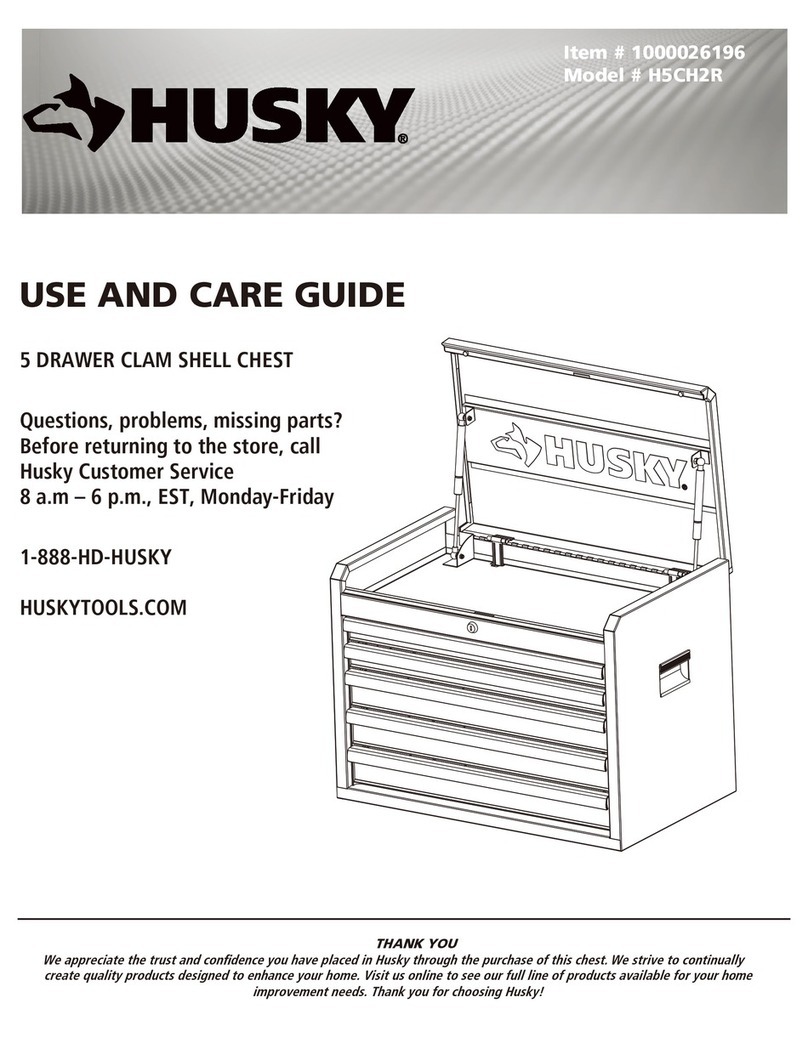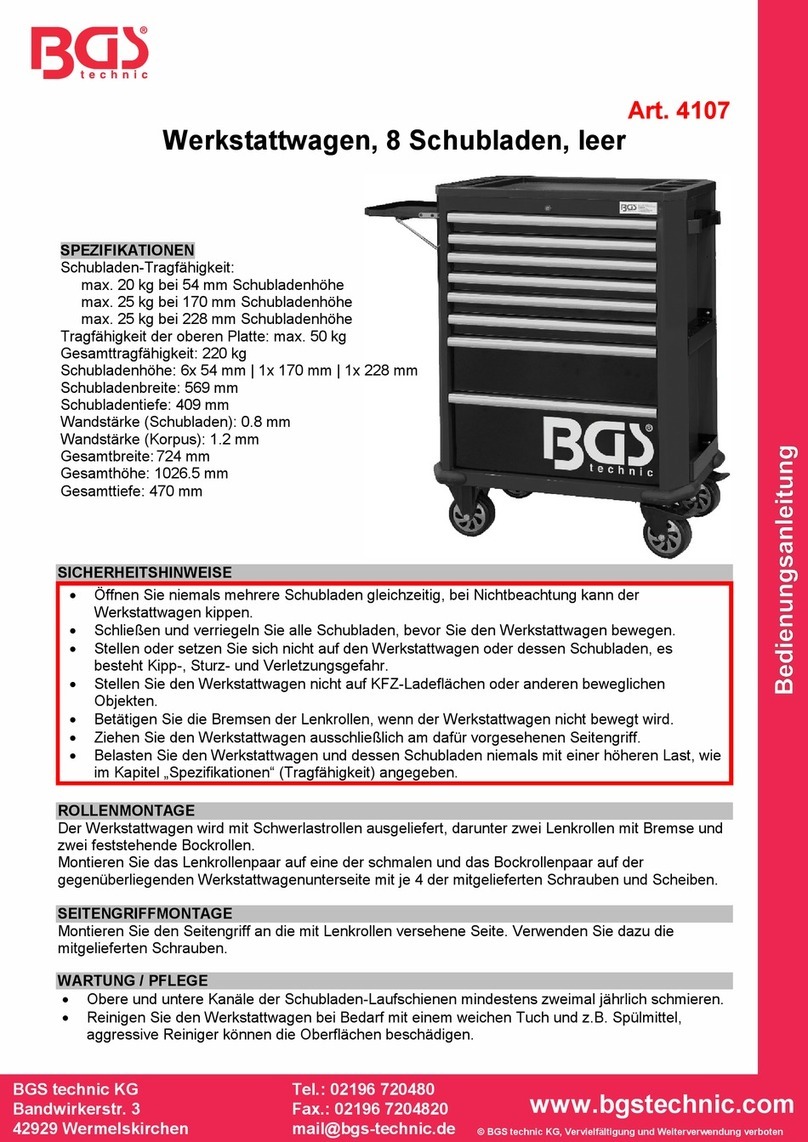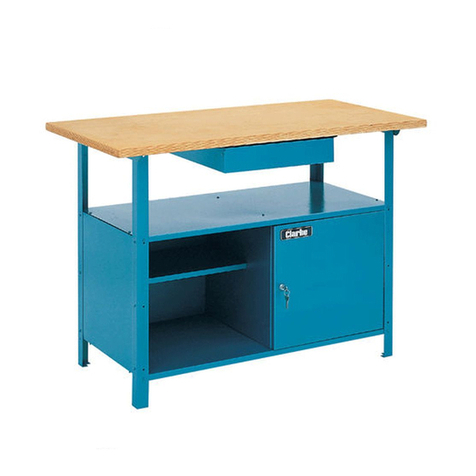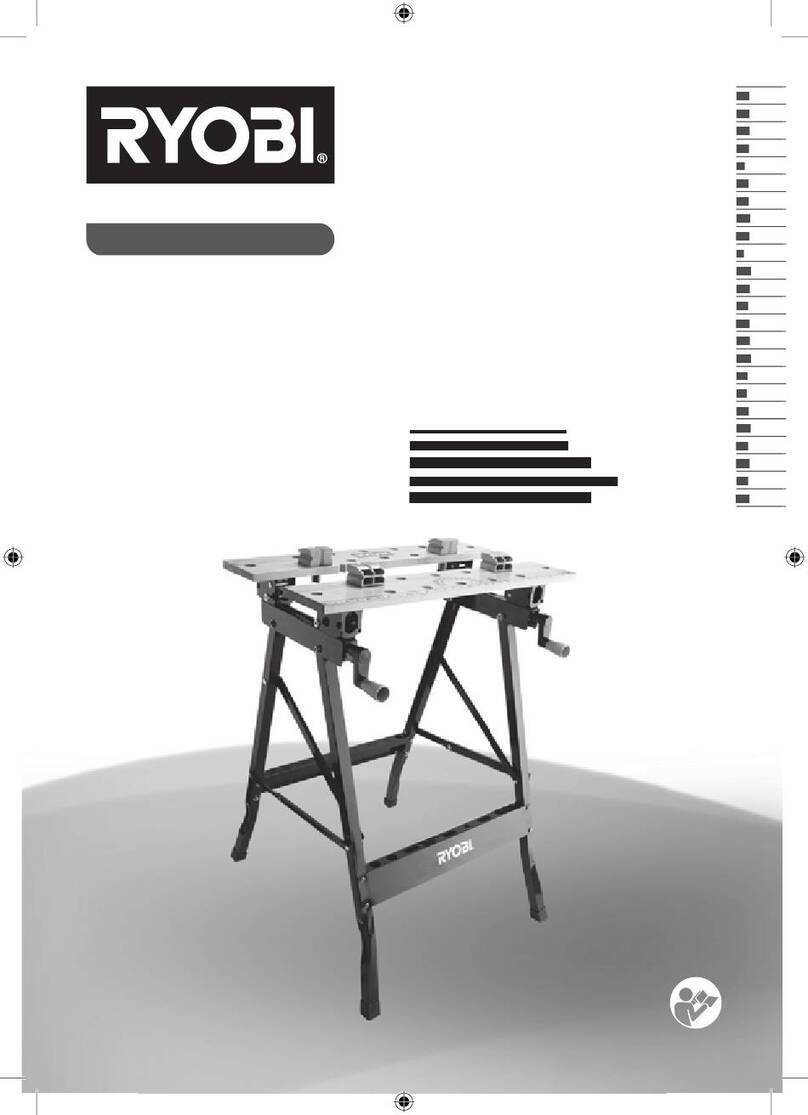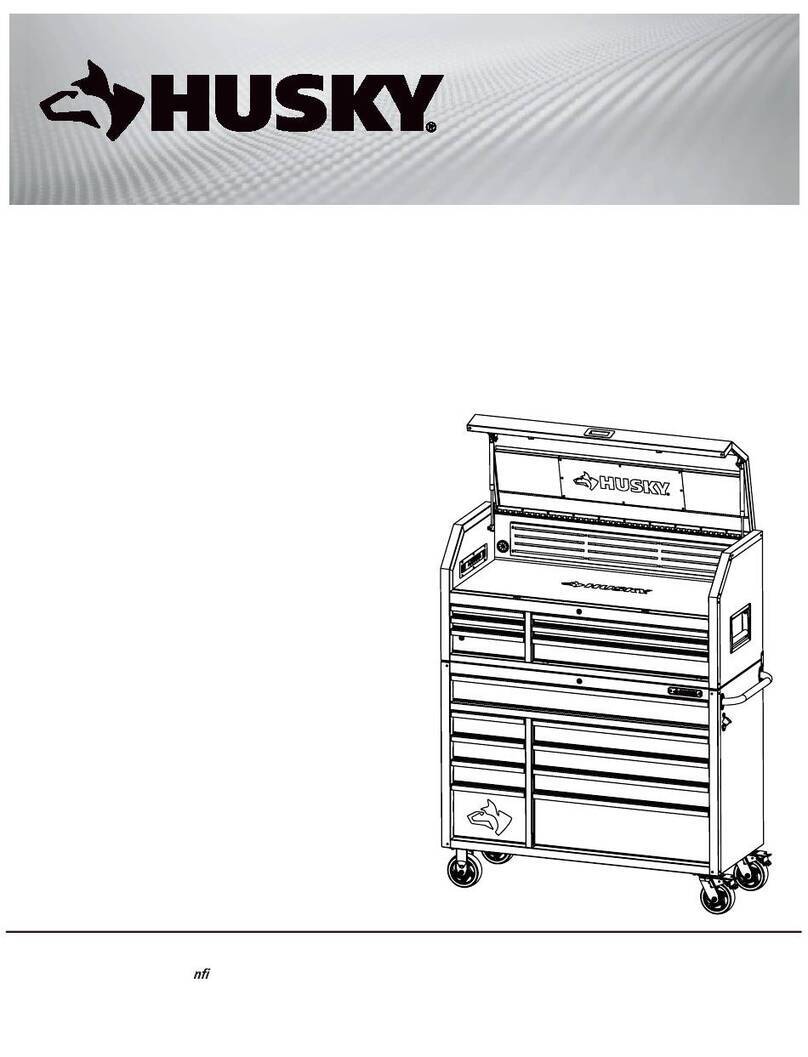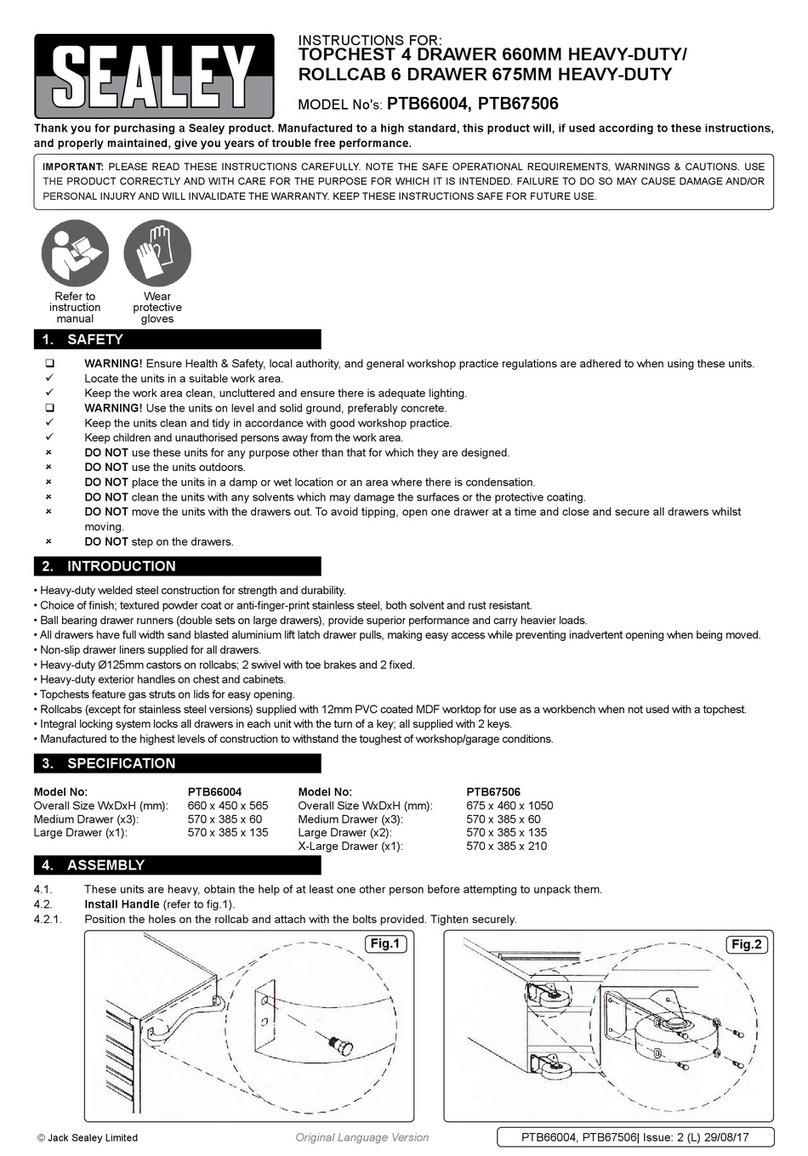
1. Turn both locking nuts counterclockwise to loosen them (Fig. 4).
(Loosening the locking nuts too much will cause them to detach
from the bolts underneath. To reattach the nut to the bolt, turn
the locking nut clockwise onto the bolt.)
2. Pivot the vise body to the desired angle (Fig. 4).
3. Turn both locking nuts clockwise until they are tightened (Fig.
INSTRUCTION MANUAL
NOTE: To prevent
accidents, locking nuts
must be tightened
before working on your
workpiece.
MOUNTING INSTRUCTIONS
Follow the instructions below to safely and securely mount your bench vise to a stable workbench.
Mounting your vise eliminates the risk of your vise moving or falling, allowing for more accuracy
and user safety.
1. Select a secure worktop to which your vise will be mounted, such as a workbench. The
workbench should be sturdy and xed to the oor.
2. Find the best location on your worktop to mount your vise. It is good to select a spot that
allows access to the leadscrew with handle, as well as the pivot locking nuts. Recommended
mounting placements can be seen in Fig. 1. When choosing a location, make sure the
leadscrew is on your dominant-hand side for rotating purposes.
3. Once you have selected where you want to mount your vise, use a pencil to mark the holes
where the vise will be bolted (three mounting anges are located on the base). You must use
at least two bolts that are opposite of each other to securely mount the vice; use three bolts
for optimum stability.
4. Move the vise to the side and use a drill to drill out the marked spots for the bolts.
5. Line up the vise with the drilled holes. Insert bolts and fasten. If the bolts extend through
the bench, place a washer and nut onto the end (Fig. 2). Tighten nuts onto the bolts using a
wrench. (Fasteners are not included.)
MAINTENANCE
Acetone may irritate the skin. Wear gloves and eye protection when using acetone.
• Your vise comes with a layer of anti-rust protective coating on the machined surfaces. Remove
this coating with a clean cloth moistened with acetone, then protect the machined surfaces by
applying a light coat of good-quality paste wax.
• After using your vise, wipe it off with a cloth to ensure that no chips, shavings, or other debris
get into the way of your vise. Keep your vise clean. Periodically check the ways of the vise to
ensure that they are not blocked or damaged by chips, shavings, or other debris.
• To keep leadscrew and other moving parts lubricated, use multipurpose grease.
• To prevent the surface from rusting, occasionally apply mineral oil to the surfaces.
• Only tighten jaws by hand, otherwise you may damage the vise or your workpiece.
OPERATION
ANVIL USES
Before operation, mount your vise, using the "Mounting Instructions" section.
1. Mark your workpiece for your specic job.
2. Rotate the leadscrew with handle counterclockwise to open the jaws. Place workpiece inside
of jaws in desired position. Rotate the handle clockwise to tighten the jaws and rmly secure
your workpiece. See Fig. 3.
3. Complete your specic job. Rotate the leadscrew counterclockwise to release your workpiece.
The anvil on the back of your bench vise can be utilized as a forging tool for metal work. It is not
recommended to hit anvil with excessive force, as this may damage the vise.
HOW TO PIVOT YOUR VISE
Locking
Nut
Leadscrew
with Handle
Open
Close
Tighten Loosen
Locking
Nut
Fig. 3 Fig. 4
4). Your vise is now secured in your desired position, and you may
continue working on your project.
NOTE: To prevent
the bolt from
loosening over
time, use split
locking washers
between at
washers and
nuts, or use
nylon locking
nuts.
Fig. 2Fig. 1
Workbench
Edge
Mount
Corner
Mount
97mm
ø12mm
97mm
